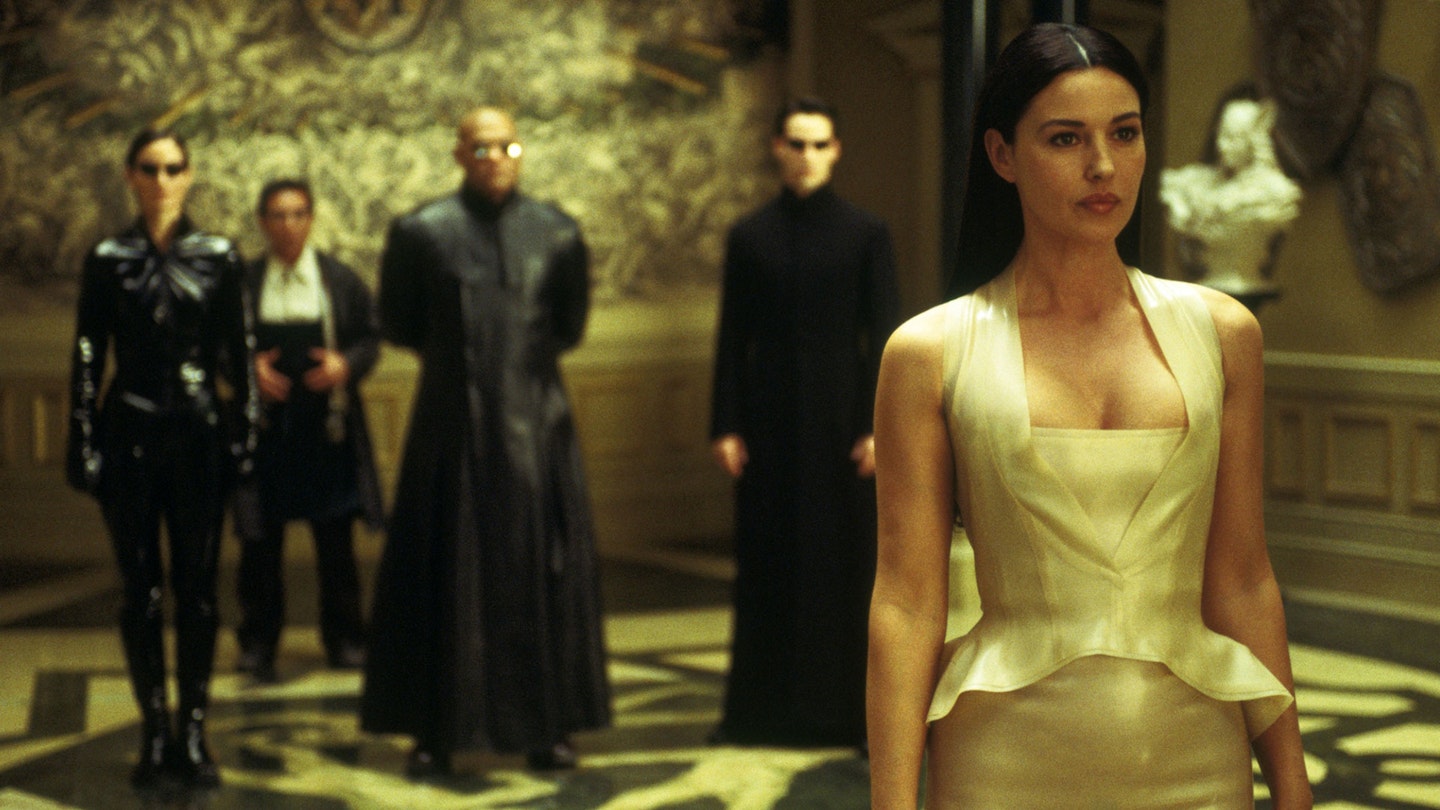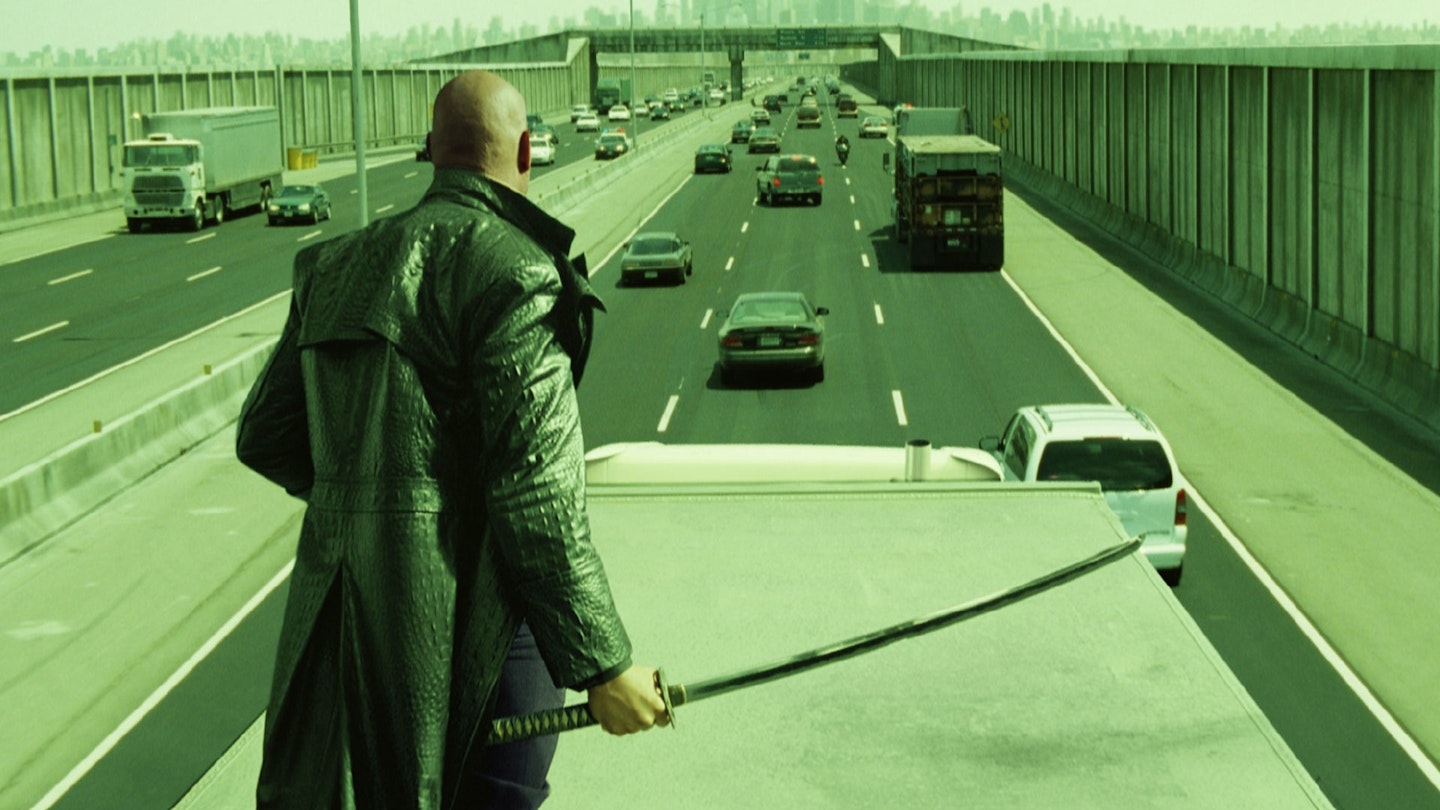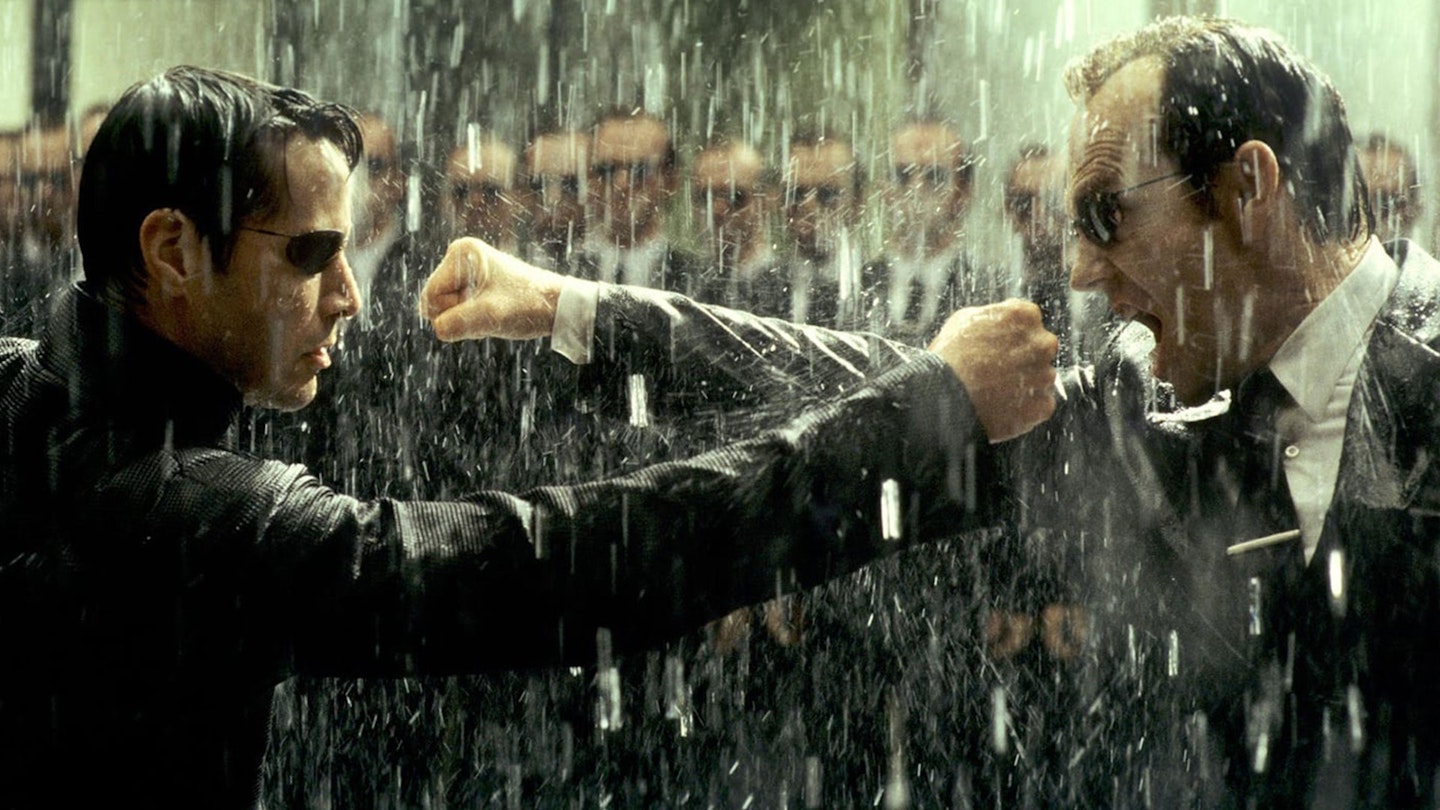Maybe it’s because The Matrix was a perfect movie. Maybe it’s because the hype was simply insurmountable. Maybe it was all the Architect’s impenetrable techno-babble. Whatever it was, when The Matrix Reloaded landed in cinemas in 2003 – 20 years ago today – it left audiences scratching their heads. Four years previously, the Wachowskis’ original revolutionary cyberpunk sci-fi classic came out of nowhere and changed the face of cinema forever – fusing wuxia fight scenes with Gen X disenfranchisement, anime influences and pop philosophy to create a mind-bending, reality-altering, bullet-dodging masterpiece. Even in a year stacked with milestone releases – Star Wars: Episode I – The Phantom Menace, Eyes Wide Shut, Fight Club, The Sixth Sense – there was no denying it: The Matrix was The One. But when Reloaded dropped, the reaction had excited fans fearing the worst: what if the sequels were closer to being… well, number two?

It wasn’t for lack of ambition. After the first film’s success, the Wachowskis declared 2003 to be “the year of The Matrix” – releasing Reloaded in May, finale Revolutions in November, with anime anthology The Animatrix and video game Enter The Matrix also dropping amid that time. What began as a one-off film with a seemingly perfect ending was about to explode into a much bigger mythology, with a raft of new characters moving between multiple mediums. And while the sisters absolutely succeeded in their aim – shooting both sequels back-to-back, and bringing the supplementary stories into the world exactly when expected – both Reloaded and Revolutions ultimately went down in history as disappointments, overly complex and out of step with what made The Matrix so special to begin with.
Here's the thing, though: while they’re not as exceptional as the original, The Matrix sequels are spectacular in their own right. They’re everything sequels should be – bigger, wilder, weirder. And they’re wickedly Wachowskian too, a microcosm of everything the director duo would go on to create in the decade-plus that followed.

Perhaps the greatest success of Reloaded and Revolutions is their willingness to push beyond the seemingly triumphant ending of The Matrix. Just as fairytale follow-ups have to ask what really comes after the happily ever after, the continuation of the story here dares to point out that Neo’s (Keanu Reeves) liberation isn’t all it seems. Sure, he can fly now – and his ascent, backed by Rage Against The Machine’s ‘Wake Up’, is still the perfect ending to the original film. But the Wachowskis’ vision for where the story goes next isn’t cynical sequel fodder – it’s an acknowledgement that systems of control are often so advanced, that true liberation requires further work and dismantling at the source. Neo’s self-actualisation – that he is The One, and that he can break free from the restrictions of The Matrix and live untethered from its rules – might feel good to watch, but it hasn’t really solved anything. Humanity is trapped, the machines still reign, and The Matrix lives on.
Reloaded and Revolutions began the Wachowskis’ increased trajectory towards unabashed sincerity and fearless sentimentality in their films.
Reloaded’s unpicking of all these ideas most likely gets lost, because the central revelation is contained in one of the sequels’ most derided scenes: Neo’s meeting with The Architect. After various brawls, our stoic hero comes face to face with the ‘man’ (or, machine program who manifests as a man) who created The Matrix – a beardy bloke with a propensity for preposterous verbosity, whose preternatural pomposity and linguistic virtuousity belies a simple truth vis à vis The One: he’s not the only, er, one. Beneath the ludicrously loquacious dialogue, The Architect sequence undermines the ‘Chosen One’ narrative – Neo isn’t chosen, he’s a pre-ordained feature of an inherently flawed system. The Matrix has already existed in five previous versions; Neo is the sixth ‘One’, and he has a specific function to uphold. He’ll either reboot the Matrix, with the machines allowing a small number of free humans to survive in Zion and repopulate the system; or, if he doesn’t, everyone dies and humanity goes extinct. It was inevitable, the Architect explains, that Neo would end up here. And every time his predecessors did, they perpetuated the system. It is expected that he will do the same.

Except, he doesn’t. And the key to Neo’s rebellion is another element that audiences perhaps struggled to accept in The Matrix sequels: an earnest – outright cheesy, even – belief in the power of love. Sure, The Matrix sees Neo being brought back to life by Trinity’s (Carrie-Anne Moss) kiss, but for the most part it is unflinchingly cool. It is, to paraphrase another pop cultural cornerstone from 2003, cooler than cool; it’s ice cold. It’s slow-mo shootouts, and hacker culture, and ‘Dodge this!’, and ‘Guns, lots of guns’. Every second feels precision-tooled to elicit a Keanu-esque ‘Woah’. But Reloaded and Revolutions began the Wachowskis’ increased trajectory towards unabashed sincerity and fearless sentimentality in their films, continuing on into Speed Racer, Cloud Atlas, Jupiter Ascending and especially into Lana Wachowski’s deeply heartfelt The Matrix Resurrections. Here, Neo defies the Architect, chooses to save Trinity’s life at the possible expense of the rest of the species, and begins a revolution that ultimately makes for a better, brighter future.
Beyond the genuine emotion and thoughtful narrative, though, the Matrix sequels really deliver in the most important area: they excel in the action department. Reloaded’s freeway sequence, with Trinity, Morpheus and the Keymaker beset by agents on an endless highway, is rightly lauded as a masterclass – part bike chase, part kung fu showdown, with a dizzying sense of speed, impeccable choreography, and complete clarity in its storytelling despite multiple moving parts. Then there’s Neo’s brawl in the Merovingian’s chateau, full of wild wire-work and playing on a knowingly operatic, mythical scale years before John Wick imagined a Greek underworld-inspired criminal realm. The overlooked Seraph fight rocks; the ‘Burly Brawl’ is brilliantly conceived even while overambitious for the technology at the time (there is, truly, a reading too in which the videogamey-ness of Neo’s unconvincing CGI double is a textural, metatextual element which enhances the films’ blurring of the boundaries between the real and the digital); Revolutions’ astonishing mech fight against the Sentinels in Zion is James Cameron-esque in its scope and execution, and still looks outstanding today. There’s thrilling variety across the films – a sense of internal one-upmanship, driven both by philosophical ideas and an instinctual understanding of what, simply, will look rad as hell.
What the sequels lack is the cleanliness of The Matrix – the streamlined simplicity and neatness of narrative. But the messiness here feels… human. These are imperfect films about the imperfections of humanity. In an era of dawning AI, it’s hard to imagine a machine coming up with orgasmic cakes, a little girl who’s the product of two programs in love, or the gleeful insanity of Hugo Weaving’s performance as an increasingly rogue, viral Agent Smith. Reloaded and Revolutions are, for better and worse, pure uncut Wachowski, from the unmistakable minds of two singular sisters. They might trip over themselves by cranking every dial up to 11 – but the attempt to pull off something this ambitious is cooler than any bullet-time sequence.
